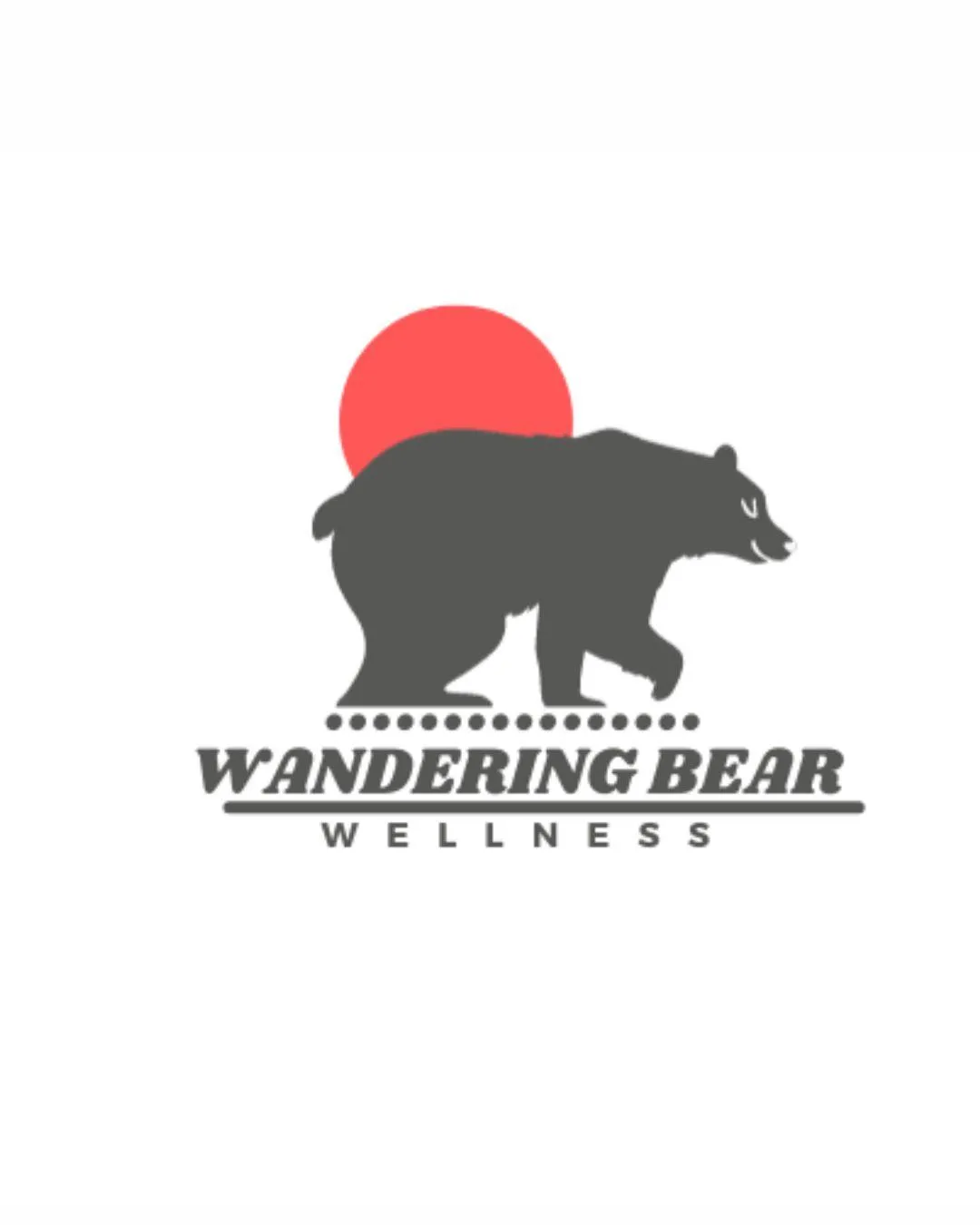WELCOME!
To those who have found this page!
This site is dedicated to The Wandering Bear Wellness Blog and Newsletter. It may, at some point, have a rhyme or reason, but for now, it is a place for questioning one's beliefs, a place for deeper connection—to self, the land around you, and others. It is not here to make you feel good about yourself or judge. It is merely a place to open up a conversation about the world we live in, with the intention of breaking free, or at least beginning to break free, from that which no longer serves our best interest.
May you find your story in my writing. May you begin to question your beliefs, and may you find joy in the mystery of life.

6 Simple steps to a healthier life. - Breathing
"Breathing is the foundation of life, and optimizing your breath can lead to profound changes in your health and vitality."
-Paul Chek
Introduction:
Let's delve deeper into the 6 foundational principles of health, with the understanding that this next principle is not just essential but serves as the cornerstone of overall well-being. It takes precedence at the beginning and remains vital throughout our health journey. Regardless of the specific health challenges we face, everything must begin with the breath. The reasons for this fundamental principle will be explored further below.
So to begin:
Starting with the breath is indeed foundational for our well-being. Let's continue exploring this principle.
First, let's take a moment to notice how we're feeling in our bodies without trying to change anything. Allow your posture and breath to naturally adjust if needed.
Begin with a complete exhale, letting out any extra air and drawing your belly button towards your spine. Take a moment to pause at the bottom of your breath before inhaling.
Inhale deeply, expanding your belly 360 degrees around your body, filling it up before your chest. Pause briefly at the top of your inhale before exhaling.
Continue this breathing pattern for about 5 rounds of inhales and exhales through the mouth, or longer if you prefer.
Now, take a moment to check in with your body. Notice if anything has shifted and how you feel after this exercise.
2. Breathing
"Start with the Breath and everything else will follow"
"How often has your breath been assessed?" Chances are, every time you've visited the doctor's office, they've placed an icy cold stethoscope on your back and asked you to breathe deeply. But did they offer guidance afterward? Likely not. Yet, consider this: your respiration is the most important system in your body."Think about it this way, In any given day you are going to take roughly 26500 breaths. Meaning roughly every 5.5-8 secs your diaphragm engages your torso enlarges and your lungs take in air, creating a chemical reaction involving moving oxogen and C02 in and out of your body.
Your breathing is directly connected to your digestive system known as peristalsis which is a wave-like muscle contraction moving food though your digestive system, moving at the same rate as your breath. If your breath is off, your digestion is most liking going to be off as well. This can lead to chronic dehydration or even malnutrition if you are constantly having diarrhea, or if you are chronically constipated (normal bowel movement is a minimal of one movement a day roughly 12"-24" or feeling completely evacuated. If you are constipated this puts you at a potential risk of getting a parasite infection.
Why your respiration is the most important system in your body.
You can only survive 3-4 minutes without air. While individuals like Wim Hof can hold their breath for extended periods, the average person can't surpass a few minutes without breathing. If you have an inhibited breathing pattern, your entire body adjusts its structure to ensure adequate air intake. This adjustment can lead to various issues; for instance, knee pain may result from your body compensating due to restricted breathing.
Let's break this down further: when your body doesn't receive enough air, it prioritizes breathing above all else, even at the expense of other systems. Without sufficient air, survival becomes the primary focus, leading to adjustments like leaning your head forward, which can strain your lower back and alter your walking posture. While this strain might not be noticeable initially, repeated over decades with thousands of steps taken, it can contribute to knee pain. Therefore, before considering drastic measures like knee surgery, it's wise to have your breathing pattern assessed by a trained professional like a CHEK practitioner.o
Why does someone have a inhabited breathing pattern?
The initial development of breathing occurs in utero and is closely linked to the ability to twist one's body, such as during crawling or walking, which involves contralateral movements. These foundational movements are first learned while still in the womb.Unfortunately, due to modern diets rich in processed and softer foods, human jaw structure has evolved to be smaller compared to 250 years ago. This change has led to a reduction in nasal cavity size, resulting in breathing challenges for many individuals. It's crucial to note that being a mouth breather, whether during the day or at night, and experiencing issues like snoring and sleep apnea are not normal behaviors. Instead, they serve as indicators of underlying breathing issues that need attention and intervention.
What should it look like?
Your diaphragm functions akin to a balloon within your chest. As you inhale, your belly and chest cavity expand, mimicking the inflation of a balloon. When you exhale, the balloon (your diaphragm) contracts and becomes smaller.
Ideally, during inhalation, the first two-thirds of your breath should originate from the bottom of your torso, known as a belly breath. However, it's essential to note that this expansion isn't limited to just the belly. Similar to how a balloon expands in all directions, your belly should expand 360 degrees during inhalation. If you were to measure this expansion around your ribcage at the 10th thoracic vertebrae, you should observe an expansion of approximately 3 to 7.5 centimeters, signifying proper diaphragmatic breathing.
What can you do to improve your breathing?
Firstly, recognize that your body compensates for various stresses, whether they're physical, mental/emotional, trauma-related, or environmental. Your body's instinct to hold its breath is a protective mechanism, useful in situations where there's imminent danger. However, it becomes less helpful when the stressor is no longer present. Therefore, identifying and addressing the underlying stressors is crucial. Certain foods, like those containing caffeine, can also speed up your breathing rate, so being mindful of your diet can make a difference.
In addition to stress management and dietary adjustments, seeking the assistance of a skilled manual therapist, such as a Rolfer, can be highly beneficial for improving your breath. Rolfing is known for its techniques that can help open up and enhance your breathing capacity, contributing to overall respiratory health.
Exercise:
Find a comfortable position lying on your back, which you can do while watching TV, listening to a podcast, or before going to bed. Place a weighted object, such as a water bottle, on your belly. This weight provides feedback to help you engage your diaphragm effectively. As you breathe in, aim to fill your belly about two-thirds full and your chest one-third full. Practice this breathing pattern for about 5-10 minutes daily until it feels natural and effortless.
If you notice that you mouth-breathe at night, indicated by symptoms like bad morning breath, snoring, teeth grinding, frequent urination during the night, excessive thirst, or feedback the person you share a bed with, consider using mouth tape while sleeping. You can easily find mouth tape on platforms like Amazon or through a simple Google search. This method encourages nasal breathing, which is more conducive to proper breathing patterns and overall respiratory health.
Resources:
Weston A. Price
Paul Chek
Breathe: James Nestor
Wandering Bear Wellness
About Us

My name is Nicholas Wasierski. I have dedicated my life to the practice of empowering humans to live an embodied life. I currently hold a license to practice Structural Integration which I gained through The Guild for Structural Integration from the original teachings of Dr. Ida P. Rolf. I am a certified Holistic Health Lifestyle and Integrative Movement Coach through the Chek Institute and I guide wilderness-based rites of passage to assist people with life transition.
I was born in Western Alaska during a winter storm on the Kuskokwim River steeped in the wisdom of knowing where my food comes from - catching salmon, gathering berries in the summer, and hunting Caribou and Moose in the fall and winter.
For many years I lived as a wanderer, finding work as a carpenter, welder, and mechanic throughout the West until I stumbled upon The Wilderness Awareness School which grounded me and reminded me of the old ways of living. Remembering that my purpose for being on this planet was to bring ceremony back to his lineage.
I found a home in Port Townsend Washington where I am currently reside, and work as a Structural Integrator (Rolfer), Holistic Health Coach, and a Rites of Passage guide running Wandering Bear Wellness.
In my spare time, you can find me singing rain down from the sky, meditating, studying, fishing, and midnight flower picking.




